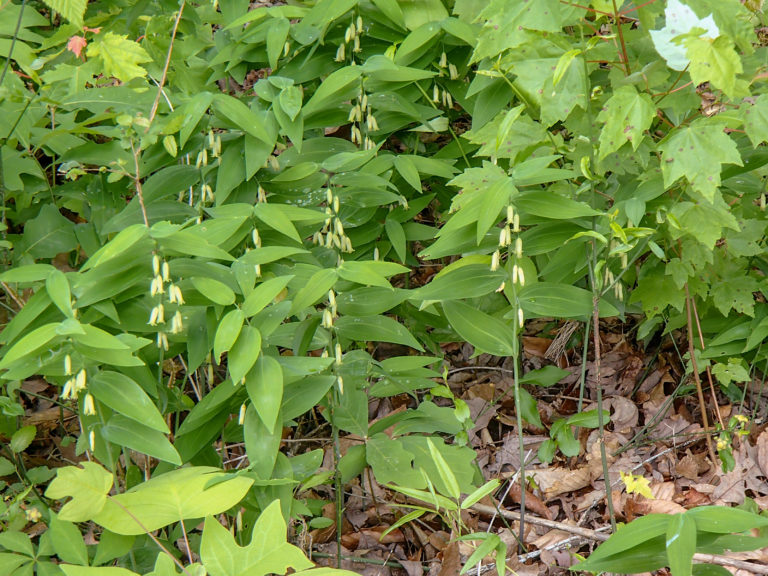Solomon’s Seal is a graceful plant which enriches the woodland haitat without competing with the larger specimens there. It grows slowly but surely in the deer-protected understory to be a beautiful show throughout the growing season. The individual plant is an arching single stem with alternate, shiny leaves and pairs of tiny, bell-shaped white flowers dangling from each node in spring. By the end of summer, the blue berries appear and the foliage turns deep yellow. Solomon’s Seal spreads by rhizomes and by seeds, forming large swaths. It is beautiful growing with Mitchella repens. The rhizomes are tuber-like and are supposed to taste like potatoes, and were apparently consumed by early American settlers. The young shoots can also be boiled and served like asparagus.
NURSERY HOURS
Wednesday: 10-4 Thursday: 10-6 Friday-Saturday: 10-4 Sunday: 12-4
Polygonatum biflorum

Key Info
Scientific Name: Polygonatum biflorum (Walter) Elliott
Common Names: Smooth Solomon's Seal, Small Solomon's Seal, Great Solomon's Seal, Lady's Seal, Sealwort
Family Names: Ruscaceae
Plant Type: Herbaceous perennial
Leaf Retention: Deciduous
Flower Color: Cream
Additional Info
Habit: Singular, upright, arching, zig zag, unbranched stems arising from jointed, starchy rhizomes.
Height: 1'- 3'
Spread: 1'
Soil Conditions: Moist, rich, acid soils, though also occurs in calcareous areas. Prefers high humus. Sandy, sandy loam, medium loam, clay loam, clay.
Leaves: Alternate, oval, entire, sessile, 2-4 inch leaves with pronounced parallel venation.
Flowers (or reproductive structures: In spring, white to greenish white, 3⁄4-inch, 6-parted, tubular flowers dangle in pairs on short pedicels from nodes along the arching stems, underneath leaves.
Fruit: Black, Blue, ¼-inch to ½-inch. ripe in September
Natural Distribution: Rich, dry to moist woodlands; thickets; calcareous hammocks.
USDA Hardiness Zone: 3 to 8
USDA Wetland Indicator Status in NC: FACU
Pollination: Bees, butterflies, other insects.
Wildlife Connections: birds eat the fruit, mamals eat roots
Propagation: Propagate by root cuttings or by seed. Plant seeds immediately or stratification will be required.
